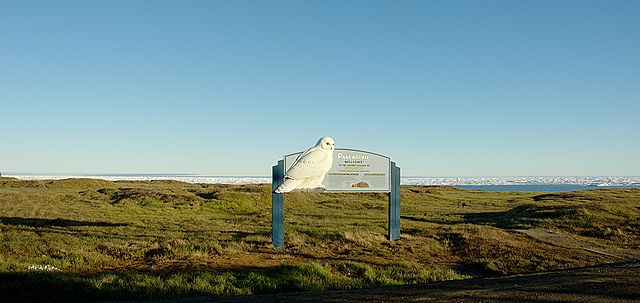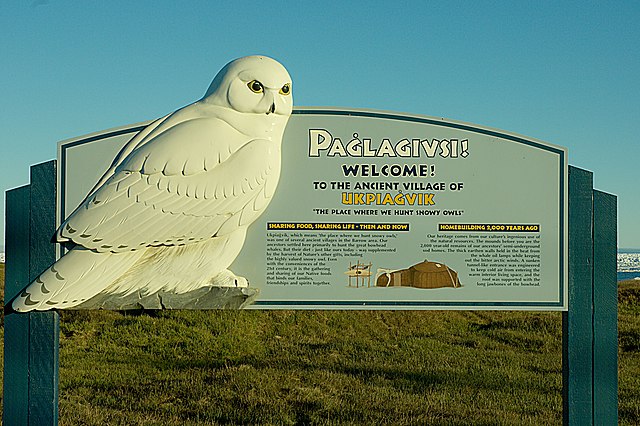The Birnirk culture was a prehistoric Inuit culture of the north coast of Alaska, dating from the sixth century A.D. to the twelfth century A.D. The Birnirk culture first appeared on the American side of the Bering Strait, descending from the Old Bering Sea/Okvik culture and preceding the Thule culture; it is distinguished by its advanced harpoon and marine technology.
A burial mound of the Birnirk culture was discovered in the town of Wales, Alaska; 16 more have been found in Utqiagvik at the "Birnirk site," which is now a National Historic Landmark. An ancient Birnirk village has been found at present-day Ukpiaġvik.
Sod house remains in Utqiagvik
Paglagivsi sign in Utqiagvik, Alaska
Old Bering Sea is an archaeological culture associated with a distinctive, elaborate circle and dot aesthetic style and is centered on the Bering Strait region; no site is more than 1 km from the ocean. Old Bering Sea is considered, following Henry B. Collins, the initial phase of the Northern Maritime tradition. Despite its name, several OBS sites lie on the Chukchi Sea. The temporal range of the culture is from 400 BC to possibly as late as 1300 AD. Another suggested range is from about 200 BC to 500 AD.
Satellite image of Bering Strait. Cape Dezhnev, Russia, is on the left, the two Diomede Islands are in the middle, and Cape Prince of Wales, Alaska, is on the right.
Winged object (harpoon counterweight?); 2nd–3rd century; ivory (walrus); Metropolitan Museum of Art (New York City)
Standing figure; 2nd century BC-1st century AD; ivory (walrus); height: 22.5 cm (87⁄8in.); Metropolitan Museum of Art
Head; 2nd–4th century; ivory (walrus); height: 6.35 cm (21⁄2 in.); Metropolitan Museum of Art






